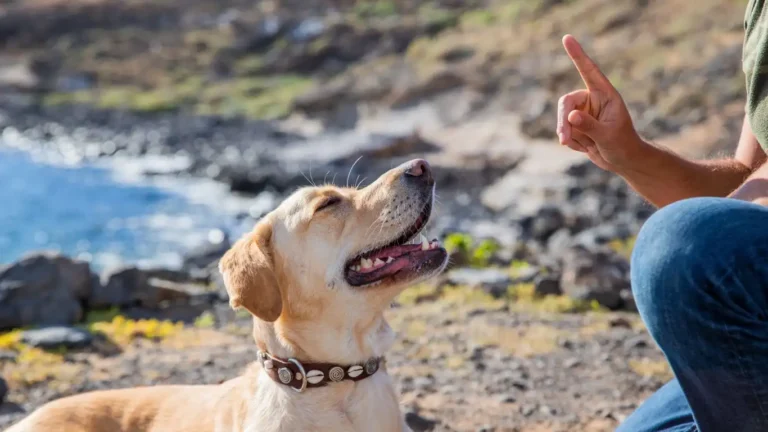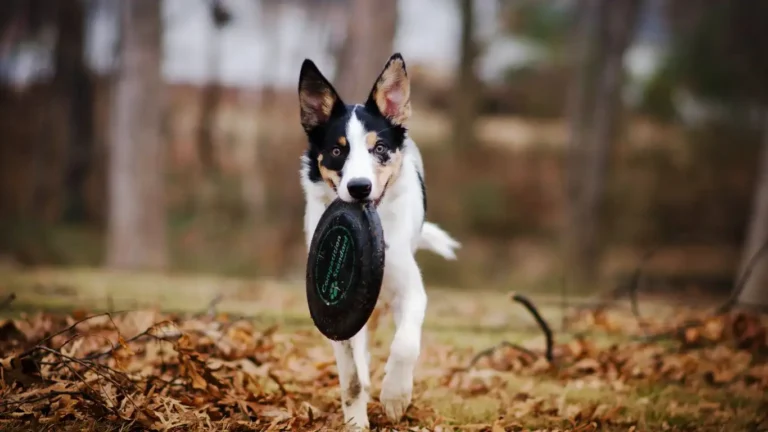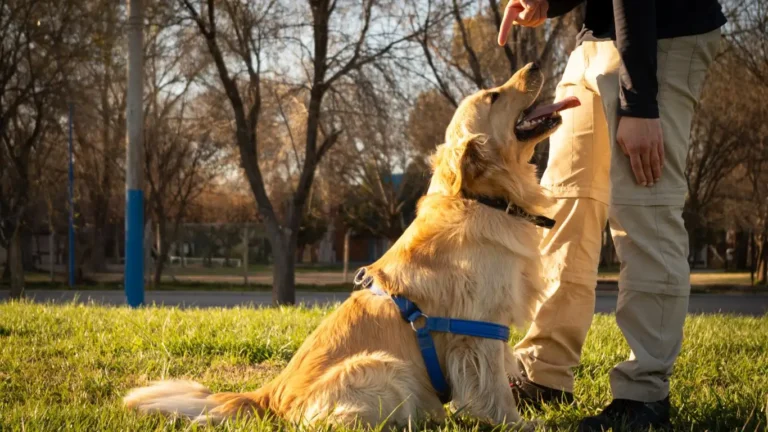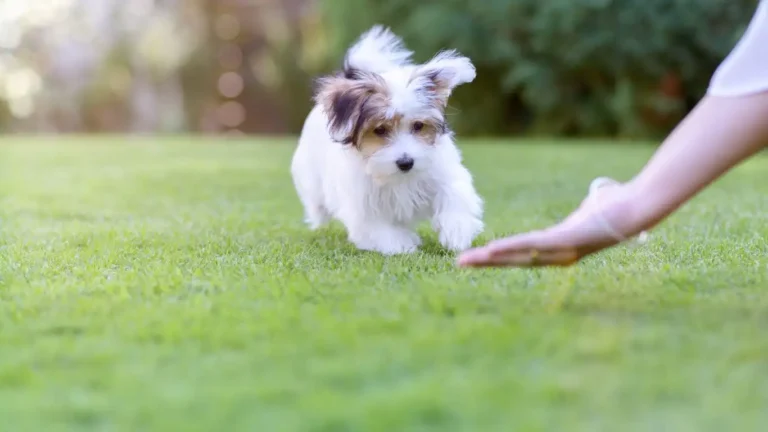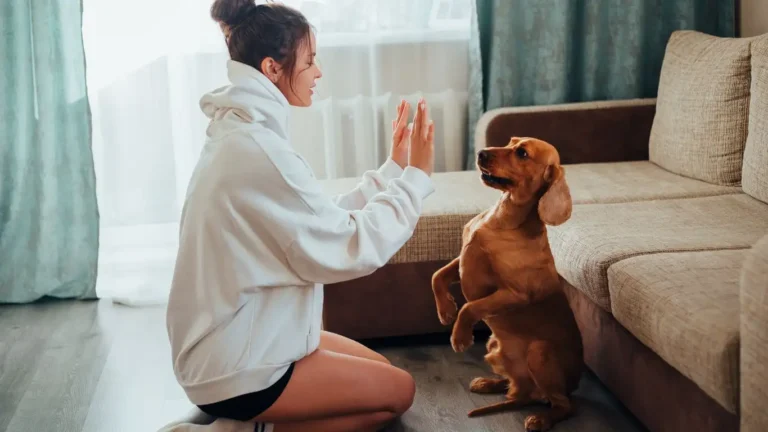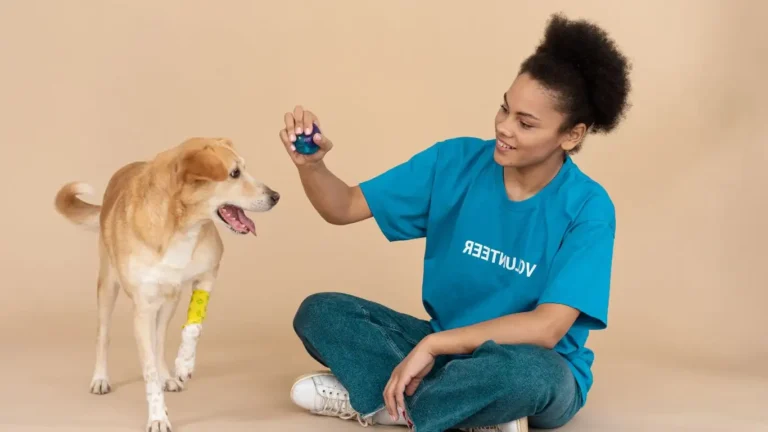How to Train a Dog to Respond to Calming Signals Fast and Effectively
If you’ve ever wondered how to train a dog to respond to calming signals, you’re not alone. It’s one of the most rewarding and overlooked parts of building a healthy bond with a pup. As a Canine-Assisted Therapy Trainer, I’ve worked with dogs of all temperaments—hyper, shy, reactive—and I can tell you that calming signals are like their unspoken language. It’s subtle, sure, but once you learn how to “speak dog,” you’ll realize they’ve been trying to communicate all along. The goal? Less stress, more trust, and smoother interactions for both of you. So let’s dive into what calming signals actually are and how you can start recognizing and using them during your training sessions.
What Are Calming Signals and Why Do They Matter?
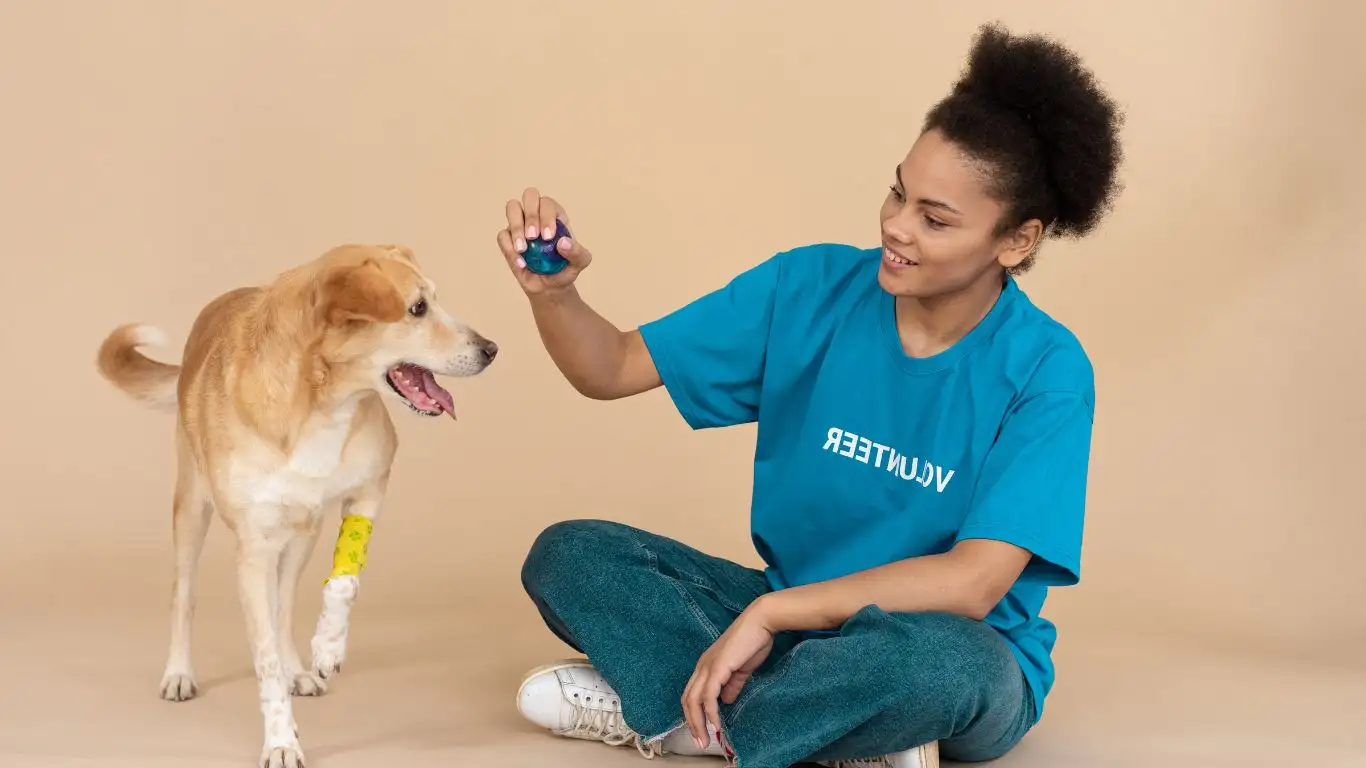
Calming signals are behaviors dogs use to communicate peace, diffuse tension, and avoid conflict. Think of them as a canine’s polite way of saying, “Hey, I’m chill,” or “Let’s take it down a notch.” They’re not just for other dogs—dogs use them with us humans, too! And when we learn to recognize and mirror these signals, we can totally change how we communicate with our pups. I remember a Golden Retriever I worked with—super sweet but anxious around loud environments. Once I started using calming signals intentionally, she visibly relaxed. It felt like magic, but really, it was just better communication.
Common Calming Signals You’ll See
Dogs have a whole toolbox of signals they use depending on the situation. Some of the most common include:
- Yawning: Not always about being tired! It can be a way to show they’re uneasy or trying to calm someone else down.
- Looking away: Breaking eye contact is a biggie—dogs often do this to avoid confrontation.
- Licking their lips: Subtle but powerful, especially in uncomfortable or tense moments.
- Sniffing the ground: Often used to redirect attention or say “I mean no harm.”
- Slow movements or freezing: Dogs will go still or move slowly to keep things calm and predictable.
Understanding these signals helps you respond with empathy instead of frustration. It’s not disobedience—it’s dialogue.
How to Train a Dog to Respond to Calming Signals
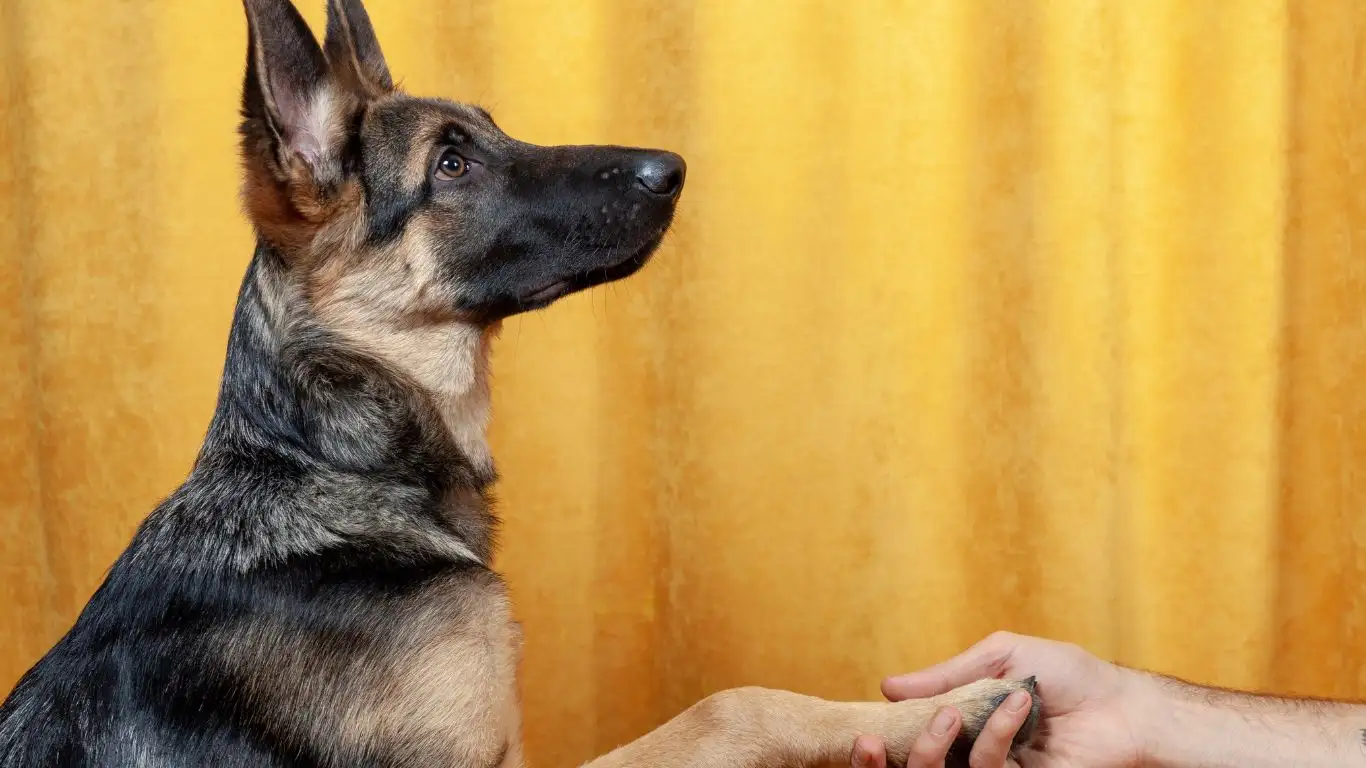
Here’s where it gets really interesting. You’re not just learning to recognize calming signals—you’re going to use them as part of your training strategy. I often say this to clients: training isn’t about dominance or rigid commands. It’s about mutual respect and listening, even if it’s silent. I’ve had therapy dogs who responded better to a yawn and a pause than any verbal cue I gave. It’s all about the vibe you bring into the space.
Start With Observation
The first step? Watch your dog. Seriously, just hang out and observe. Take mental notes of their body language in different settings. When do they yawn? When do they look away? What do they do when they’re nervous, excited, or meeting someone new?
- Pick a calm setting—your living room or backyard works great.
- Limit distractions. Turn off the TV, put your phone away.
- Just be present. Sit on the floor, breathe slow, and let them come to you.
- Mirror their calming signals—yawn if they yawn, look away softly when they do. It feels silly at first, but trust me, they notice.
Use Calming Signals During Training
Now try integrating those signals when you’re actually training. For example, if your pup gets overly excited or stressed when learning a new command, pause and look away gently. Or throw in a soft yawn if they seem overwhelmed. These non-verbal cues help reset their emotional state and let them know it’s okay to slow down.
It’s wild how effective this can be, especially for anxious or reactive dogs. I once worked with a Border Collie named Max who would bark and pace the second we started a session. The minute I started using calming signals—slower movements, looking away, deep breaths—his barking dropped by half within minutes. It was a game-changer.
Building Trust Through Body Language
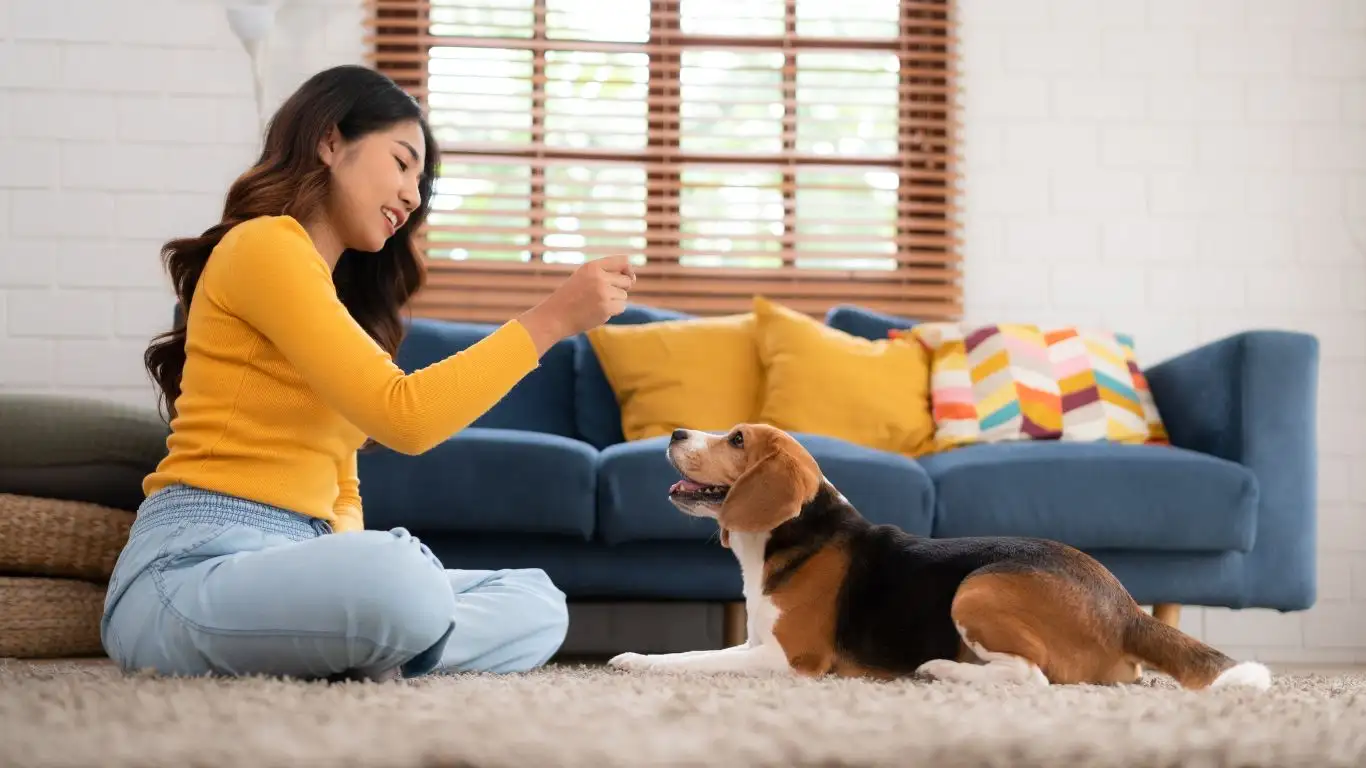
Body language speaks louder than commands. And dogs? They’re watching you constantly. Every breath, every shift in posture, every facial expression—they’re reading it. That’s why your own state of mind matters during training. If you’re tense, they’ll feel it. If you’re calm, they’ll match that energy more often than not.
Soften your movements. Use slower gestures. Avoid towering over your dog, especially if they’re unsure. Sit or kneel to their level when possible. Keep your voice low and your energy grounded. These little tweaks make you feel more approachable and safe in your dog’s eyes.
And here’s a little secret from the therapy world: the more calming signals you use naturally, the more intuitive your connection becomes. It’s not just training—it’s relationship-building.
Using Calming Signals in Real-World Situations
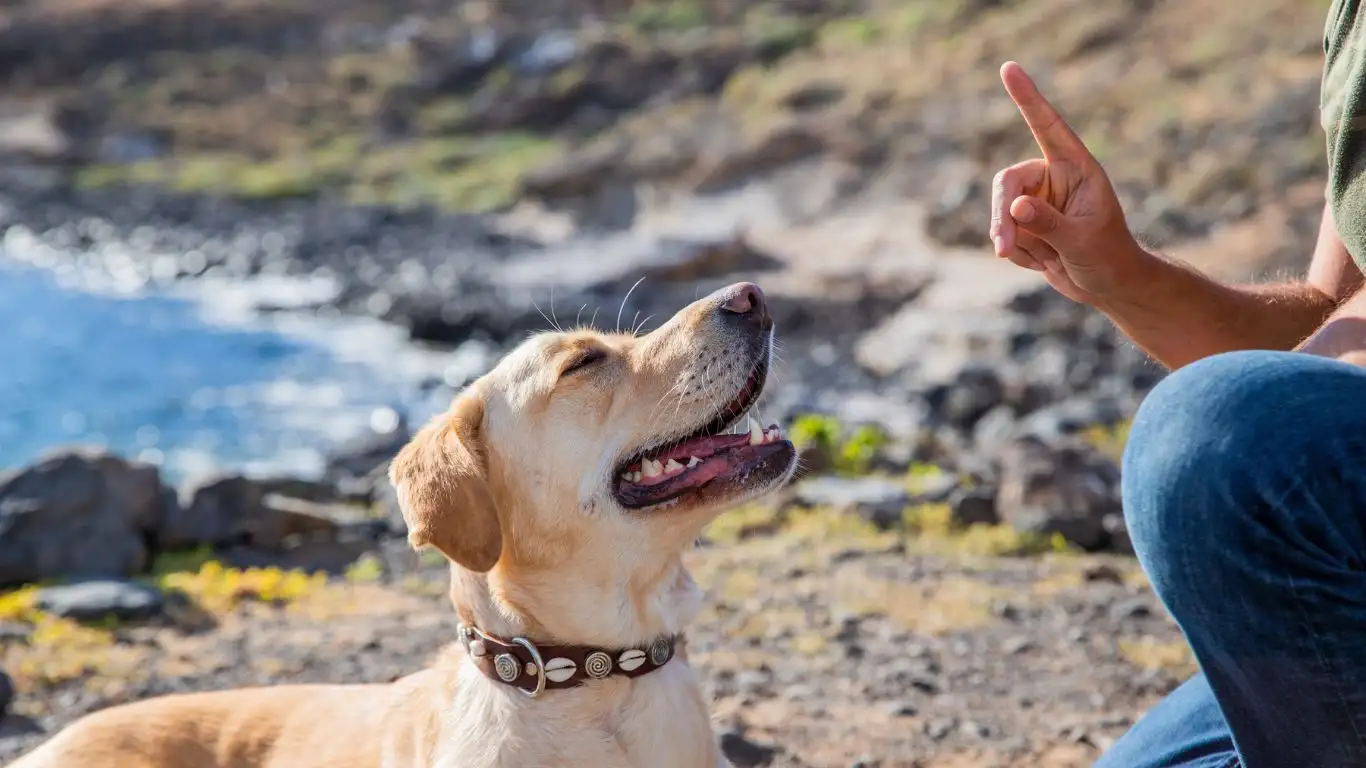
Once you’ve started experimenting with calming signals at home, the next step is using them in real-world environments. This is where it gets fun—and, let’s be honest, sometimes a little chaotic. But that’s where the growth happens. One thing I always tell clients is this: don’t expect perfection. Dogs aren’t robots (and neither are we), so it’s more about consistency than flawless execution.
Take walks, for example. You’re out and about, your dog sees another dog across the street, and boom—ears perk, tail stiffens, maybe even a bark or two. In that moment, your reaction can either escalate or de-escalate the situation. Instead of yanking the leash or barking back with a “no!”, try this:
- Pause and breathe. Slow your own energy first.
- Use a soft look-away or slow blink—avoid locking eyes with your dog or the trigger.
- Turn your body slightly sideways to be less confrontational.
- Offer a calming signal—maybe a yawn, lip lick, or gentle crouch.
I had a session once with a nervous little rescue terrier named Luna. On our first walk, she barked at every stroller, skateboard, and squirrel in sight. But once I started layering in calming signals consistently, she began checking in with me instead of reacting. Within a couple weeks, she was walking calmly past playgrounds like a total pro. Progress, not perfection!
Understanding Your Dog’s Threshold
Every dog has a threshold—a tipping point where they go from curious or alert to overwhelmed and reactive. Part of learning how to train a dog to respond to calming signals is recognizing when they’re approaching that edge, and stepping in before they cross it.
Look for the early signs: tightened mouth, dilated pupils, shifting weight forward, or scanning the environment anxiously. When you spot those, don’t push forward. That’s your cue to slow things down and reinforce calm behavior instead. If needed, add distance. Let them decompress. You’re teaching them that you’ve got their back, which is huge for building trust.
Creating a Safe Space for Learning
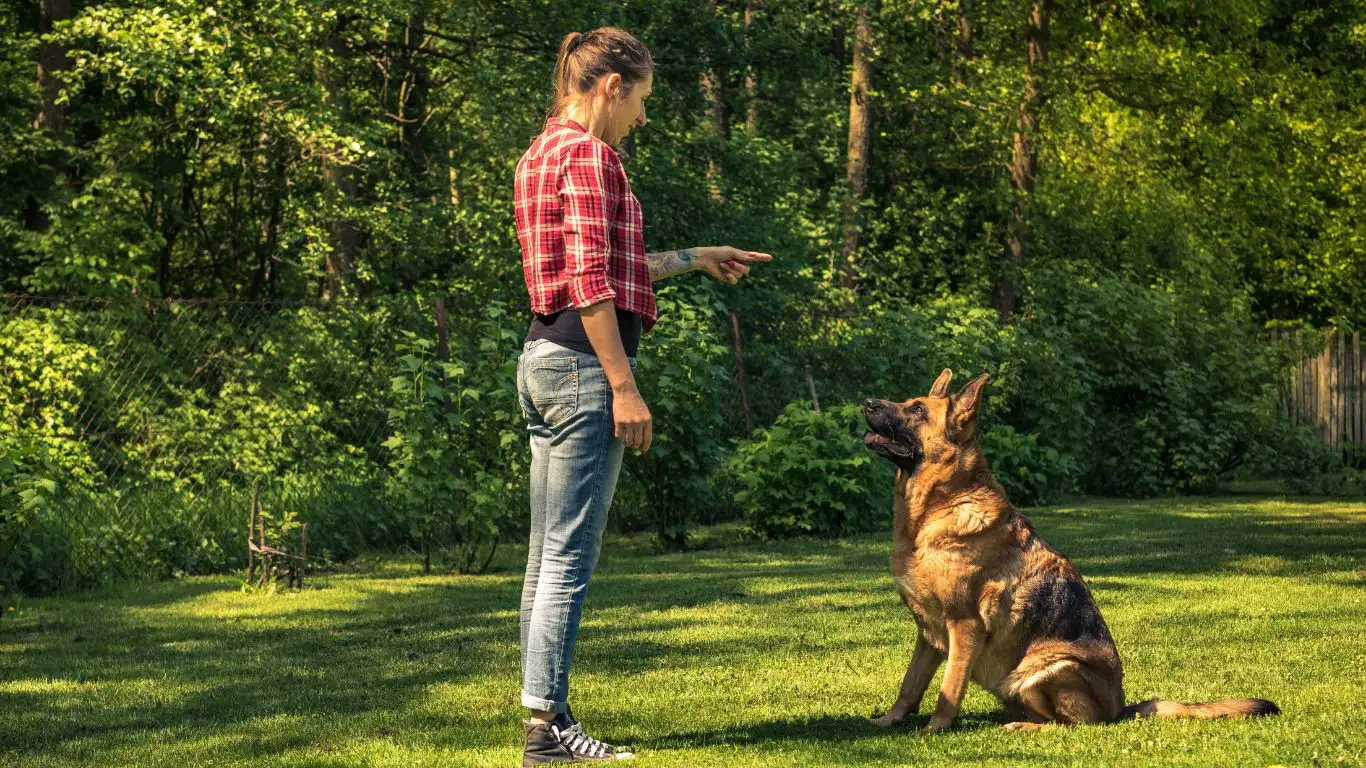
One of the biggest game-changers in training is setting up an environment where your dog actually feels safe. I know that sounds obvious, but I’ve walked into so many homes where the dog’s training space is full of distractions, loud noises, or chaotic energy. Dogs thrive on consistency and calm vibes. Your training space doesn’t have to be fancy—it just has to be predictable and low-pressure.
Some quick tips for creating a calm training environment:
- Pick a quiet area with minimal foot traffic.
- Use soft lighting and avoid sudden noises like clanging dishes or loud TVs.
- Have a comfy mat or bed nearby—this gives your dog a place to retreat if needed.
- Keep training sessions short and sweet—think 5-10 minutes tops to start.
And here’s a little secret I’ve learned through the therapy dog world: background music can really help. I’ve had amazing results using soft instrumental playlists or classical music to help dogs settle and focus. If you’ve got a reactive or high-energy pup, give it a try—it’s surprisingly effective.
Rewarding the Right Energy
Too often, we reward excitement instead of calm. A dog jumps up and we give attention. They whine and we soothe. It’s not intentional—it’s just human nature. But in training, especially when using calming signals, it’s crucial to reinforce the state of mind you want more of.
Start rewarding quiet eye contact. Soft body posture. Slow movements. If your dog yawns or looks away in a tense moment—yes, reward that! These are golden moments that show your dog is trying to self-regulate. You want to mark and reinforce those choices just like you would for a “sit” or “stay.”
And don’t forget yourself in this equation. Calm energy from you is just as important as the treats you carry. I like to do a few deep breaths before each session—helps me stay grounded, especially if I’m working with a dog who picks up on every little flicker of emotion.
Consistency is Key—But Give Yourself Grace

Look, no one nails this stuff every time. I’ve been doing this for years, and I still have off days. Dogs do too. The important thing is to keep showing up with patience and curiosity. One of my most reactive clients—a blue heeler mix named Archie—had more setbacks than progress in the first month. But his guardian stuck with the process, used calming signals consistently, and celebrated the little wins. Now? Archie’s a registered therapy dog working with kids on the autism spectrum. Yeah, it’s that powerful.
So if your dog doesn’t respond right away, don’t sweat it. You’re planting seeds. The more you integrate calming signals into your day-to-day routine, the more natural it becomes—for both of you. Before long, you won’t just be training a dog… you’ll be having a real conversation.
Turning Calming Signals Into a Daily Habit
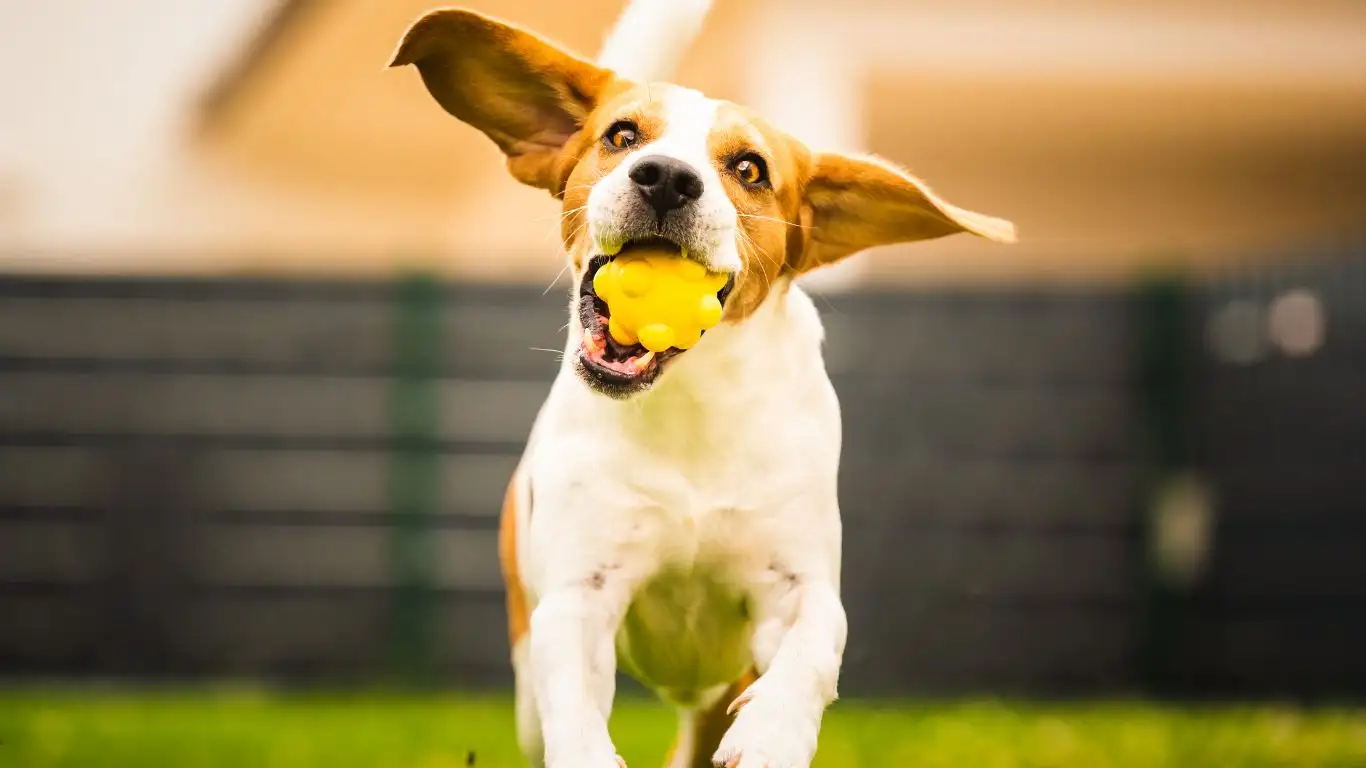
By now, you’ve probably realized that learning how to train a dog to respond to calming signals isn’t about drilling commands or making your dog “obey.” It’s a shift in how you communicate. And the beautiful thing is, once you get the hang of it, it becomes second nature. It’s not a technique—it’s a way of being around your dog.
One way I help clients keep up the habit is by embedding calming signal practice into daily routines. You don’t have to carve out special “training time.” It’s more effective to sprinkle these behaviors into your everyday interactions:
- Yawning softly during greetings instead of getting hyped up
- Looking away briefly when your dog seems overstimulated
- Taking a few deep breaths before feeding or leash time
- Rewarding calm moments instead of just active behaviors
One of my therapy dogs, a senior Labrador named Maple, picked up on my calming cues so well that we used them in hospital settings. If a patient was nervous or emotional, Maple would lie down and look away gently, using her own calming signals to de-escalate the energy in the room. It was powerful, and all it took was consistent reinforcement and modeling at home.
Helping Others Understand Your Dog’s Needs
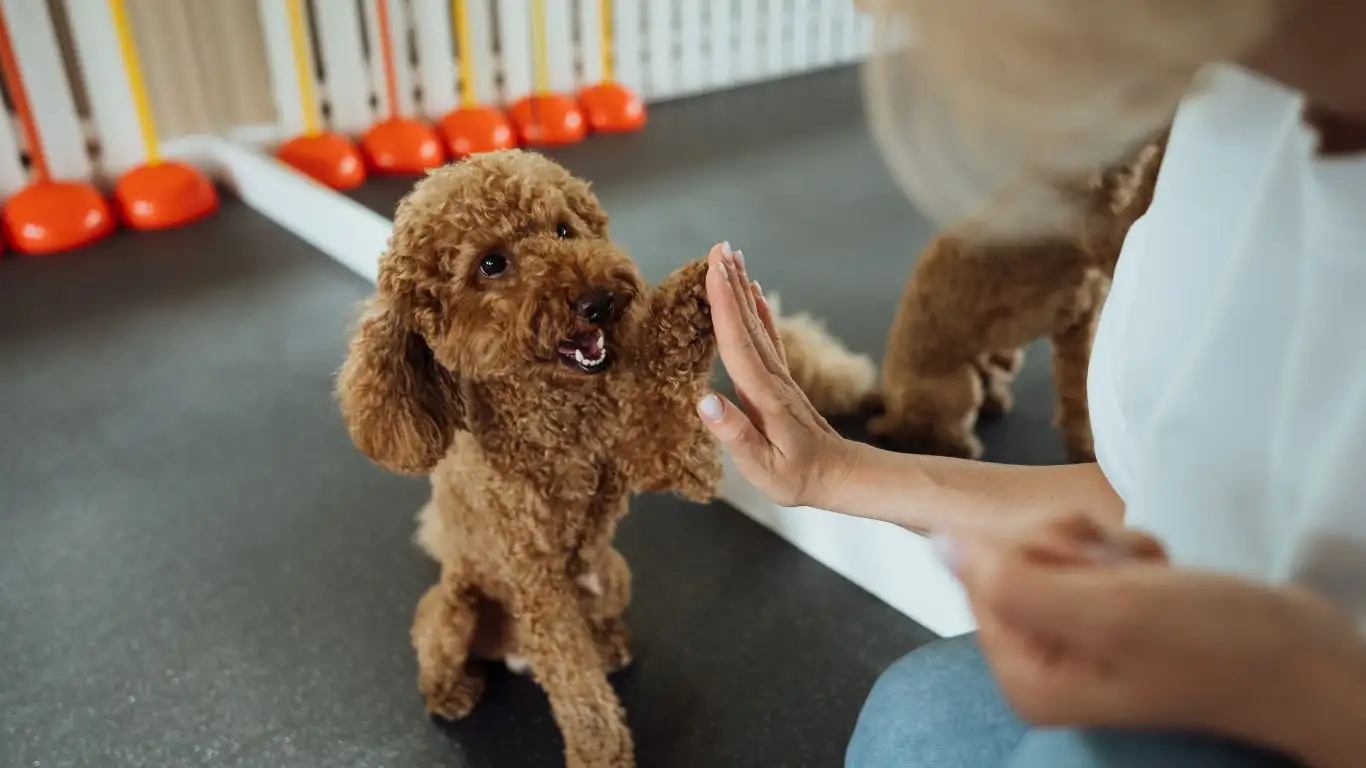
One of the challenges I see in real life is how much other people can unintentionally sabotage your dog’s calm progress. Whether it’s strangers approaching too fast or family members who get your dog hyped up with rough play, it’s crucial to become your dog’s advocate.
If someone reaches out to pet your dog too quickly, it’s okay to step in. I often say something like, “He’s in training, could you let him come to you?” Or, “We’re working on calm greetings—can you wait a second?” Most people respond positively when you explain what you’re doing.
And don’t be afraid to educate. Share what you’ve learned about calming signals with friends, pet sitters, or even your vet. The more people understand this subtle dog language, the better your dog’s world becomes. I once taught a local groomer a few basic calming cues and it completely changed how she handled anxious dogs. Little ripples, big impact.
Recognizing Progress That Isn’t “Perfect”
When you’re in the thick of it, it’s easy to miss the wins. Progress can be slow and subtle—especially with dogs who’ve had trauma, reactivity, or just a sensitive temperament. I always encourage my clients to look for the micro-moments. Did your dog take a deep breath after hearing a loud noise instead of bolting? That’s a win. Did they look to you for reassurance instead of barking? Another win.
This journey is about emotional resilience, not obedience. And it takes time. I worked with a rescued husky named Rio who wouldn’t make eye contact for weeks. But one day, after a soft look-away and a yawn, she finally sat near me without tension in her body. That moment felt bigger than any command ever could.
Final Thoughts on Training with Calming Signals
If there’s one thing I want to leave you with, it’s this: dogs want to connect. They’re constantly offering us information—we just have to slow down enough to notice. Whether you’re working with a brand-new puppy or a reactive rescue, learning to use calming signals is a gift to both of you. It deepens trust, strengthens your bond, and brings a sense of peace into the relationship that traditional obedience training often misses.
And remember, there’s no such thing as “too late” to start. I’ve trained dogs in their golden years who responded beautifully to calming cues. It’s never about age—it’s about willingness to listen, adapt, and show up with presence.
Recommended Reading and Resources
- American Veterinary Medical Association (AVMA) – great for science-backed behavioral advice
- ASPCA – for general dog care and behavioral tools
- Fear Free Pets – helpful strategies to reduce stress in pets
- Tufts Cummings School of Veterinary Medicine – for research-based behavior insights
Trust your instincts, trust your dog, and most of all—have fun with it. This kind of connection is what makes life with dogs so incredible.
Disclaimer
This article is based on my personal experience as a Canine-Assisted Therapy Trainer and is intended for educational purposes only. It should not replace professional veterinary or behaviorist advice for dogs with serious behavioral issues. Always consult a certified professional for individualized support. For more on animal behavior and welfare, visit AVMA or your local veterinary provider.
